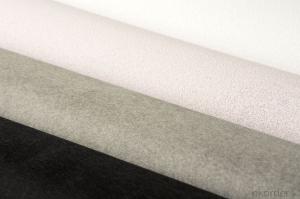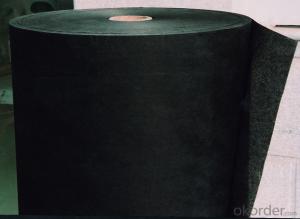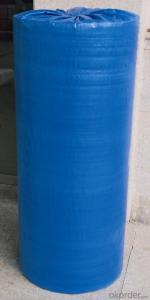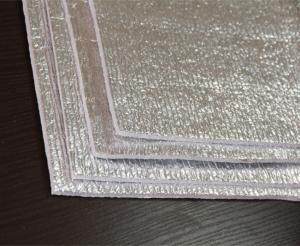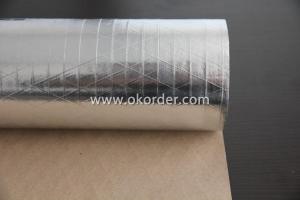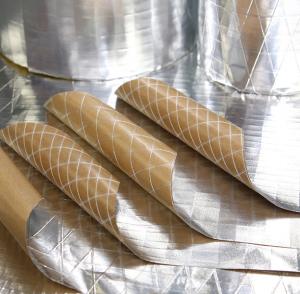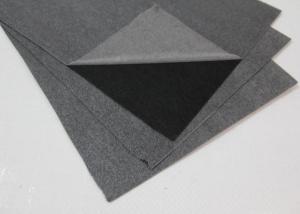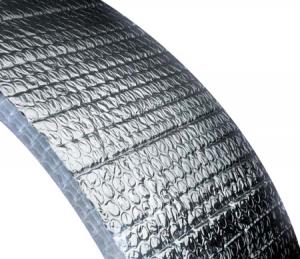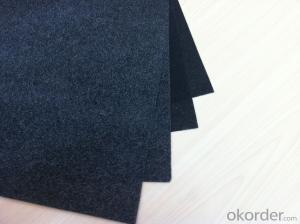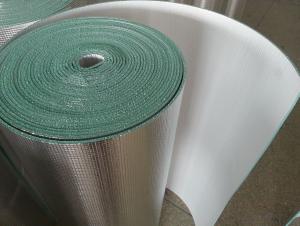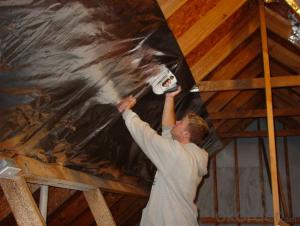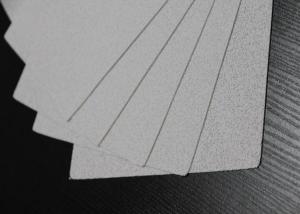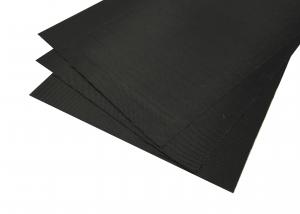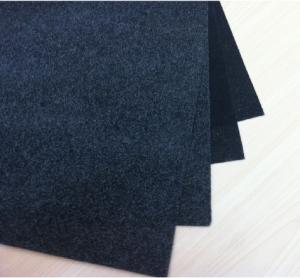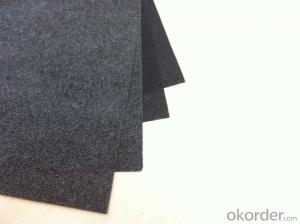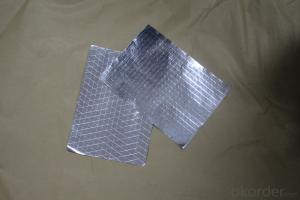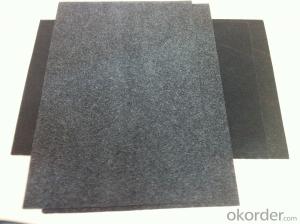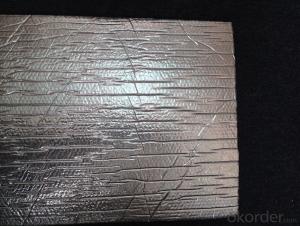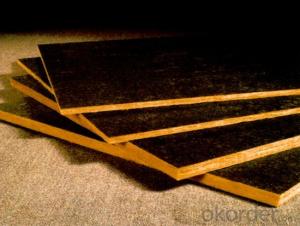REINFORCEMENT TISSUE for ROOFING ACOUSTIC-65C
- Loading Port:
- Shanghai
- Payment Terms:
- TT OR LC
- Min Order Qty:
- 500 m²
- Supply Capability:
- 100000 m²/month
OKorder Service Pledge
OKorder Financial Service
You Might Also Like
Item specifice
Introduction of Fiberglass Tissue
Fiberglass Tissue is a kind of facing, which is made of by the white fiberglass tissue, and special production process.
Application of Fiberglass Tissue
Our black tissue are mainly used as facing for glass wool insulation, rockwool, mineral wool etc. Also fiberglass tissue facing is used under roof decking, under attic rafters, over existing attic thermal insulation, in floors, walls and crawl spaces, and in industrial and commercial buildings to block radiant heat coming into house through the roof during the summer and retain indoor heat generated during in winter
Advantage of Fiberglass Tissue
Light weight
• High manufacturing accuracy
• High strength
• Small inertia resistance
• Strong heat dissipation ability
• Good visual effect
• High reflective insulation
• Heat resistant, water proof, stable at high temperature;
• Environmentally friendly, no smell and not-toxic;
• Smooth and clear surface;
Packing of Fiberglass Tissue
1. Waterproof paper then PVC shrinking Film
2. Water-Proof film only
3. Woven cloth
4. Kraft paper or Water Proof Film then Metal/wooden pallet
5. (Also as your request. )
Pictures of Fiberglass Tissue


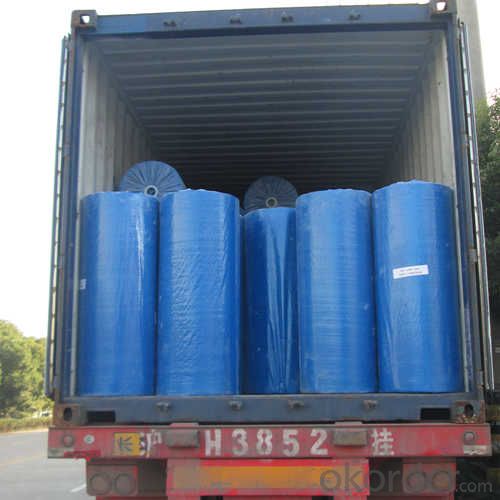
Specification of Fiberglass Tissue
Specification | ||
ITEM | UNIT | VALUE |
Type | C | |
Weight | g/m2 | 65±5 |
Thickness | mm | 0.40 |
Tensile Strength MD | n/125px | ≥130 |
Tensile Strength XD | n/125px | ≥90 |
Fiber Diameter | µ | 9 |
Fire Resistant Property | B1 | |
FAQ
We have organized several common questions for our clients,may help you sincerely:
1. What is the storage condition?
The Aluminum Foil Facing should be stored at room temperature and kept from wet and heat source.
2. How to guarantee the quality of the products?
We have established the international advanced quality management system,every link from raw material to final product we have strict quality test;We resolutely put an end to unqualified products flowing into the market. At the same time, we will provide necessary follow-up service assurance.
3. How long can we receive the product after purchase?
In the purchase of product within four working days, we will arrange the factory delivery as soon as possible. The specific time of receiving is related to the state and position of customers. Commonly 7 to 10 working days can be served.
- Q:What is the typical thickness of fiberglass facing?
- The specific application and requirements dictate the typical thickness of fiberglass facing, which can vary. Generally, fiberglass facing comes in thicknesses ranging from 0.5 millimeters to 2 millimeters. For lightweight and flexible applications like insulation and acoustic panels, thinner fiberglass facing (approximately 0.5 to 1 millimeter) is commonly utilized. On the other hand, heavier-duty applications in construction and industrial settings often require thicker fiberglass facing (around 1.5 to 2 millimeters) for enhanced strength and durability. To ensure optimal performance and functionality, it is crucial to consider the project's specific needs and specifications when determining the appropriate thickness of fiberglass facing.
- Q:How does fiberglass facing contribute to energy efficiency in buildings?
- Fiberglass facing contributes to energy efficiency in buildings by acting as a thermal insulator. It helps to reduce heat transfer through the walls, ceilings, and floors of a building, leading to improved energy conservation and lower utility bills. Additionally, fiberglass facing can also provide an effective barrier against air infiltration, reducing drafts and improving indoor air quality.
- Q:Roof waterproof general use of what materials
- 1. EPDM rubber waterproofing membrane: cold sticky or self-adhesive method. 2. Chlorinated polyethylene waterproofing membrane: cold sticky method. 3. PVC waterproofing membrane: cold sticky method. 4. Chlorinated polyethylene - rubber blend waterproofing membrane: cold sticky method. 5. EPDM - polyethylene blend waterproofing membrane: cold sticky method. 6. Polyurethane waterproof coating: reactive cold construction. 7. Acrylic waterproof coating: cold construction, can be scraping, can be, can be sprayed, but the construction temperature needs to be higher than 4 ℃ when the film.
- Q:How does fiberglass facing improve insulation?
- By adding a layer of fiberglass facing, the insulation material is improved as it receives an extra layer of protection. This facing acts as a barrier, preventing the entry or escape of air and moisture from the insulation. This not only helps maintain the desired temperature inside the insulated area but also prevents the growth of mold or mildew. Moreover, the facing strengthens and increases the durability of the insulation, making it more resilient against damage and ensuring its longevity. Additionally, it enhances the fire resistance of the insulation, providing an additional level of safety. Overall, the fiberglass facing enhances the insulation's thermal performance, resistance to moisture, durability, and safety.
- Q:What are the benefits of using fiberglass facing?
- The benefits of using fiberglass facing include its durability, resistance to moisture and chemicals, excellent thermal insulation properties, and ease of installation. Additionally, fiberglass facing is lightweight, cost-effective, and provides a smooth and attractive finish.
- Q:Fiberglass Felt Polyester Powder Adhesive Details
- Glass fiber is an excellent performance of inorganic non-metallic materials, a wide range of advantages is good insulation, heat resistance, good corrosion resistance, high mechanical strength, but the disadvantage is brittle, poor wear resistance.
- Q:What is the lifespan of fiberglass facing?
- The durability of fiberglass facing may differ due to several factors, including the material's quality, the environment it encounters, and the level of maintenance it receives. Nonetheless, fiberglass facing typically endures for a span of 20 to 30 years on average. By ensuring proper care and maintenance, it is conceivable for fiberglass facing to persist for an even greater duration. Regular cleaning, refraining from using harsh chemicals or abrasive cleansers, and shielding it from excessive sunlight and extreme temperatures can contribute to extending its lifespan.
- Q:Is not the multi-layer membrane waterproof, the bottom of the membrane should use glass fiber mats?
- In the yin and yang angle additional layer construction better fit, polyester tire waterproofing membrane tires hard
- Q:What is fiberglass facing?
- Fiberglass facing, also known as a thin fiberglass layer, is employed to cover or coat surfaces for diverse objectives. It usually consists of tightly woven glass fiber strands that are held together by a resin or adhesive. This facing material is renowned for its robustness, longevity, and ability to withstand heat, moisture, and chemicals. It is frequently utilized in the construction, insulation, and manufacturing sectors for purposes like insulation boards, ductwork, wall panels, and composite materials. By adding an extra protective layer, the fiberglass facing bolsters the structural soundness and effectiveness of the materials it is utilized on.
- Q:Are there different types of fiberglass facing available?
- Yes, there are different types of fiberglass facing available. Fiberglass facing is a material used in various applications, such as insulation, construction, and automotive industries. It is available in different forms and configurations to suit specific needs and requirements. One common type of fiberglass facing is the woven fiberglass fabric. It is made by weaving fine strands of fiberglass together, creating a strong and durable material. Woven fiberglass fabric is commonly used in applications requiring high strength and resistance to heat and chemicals. Another type is the chopped strand mat (CSM), which consists of short strands of fiberglass randomly dispersed and held together by a binder. CSM is often used in applications where ease of handling and conformability are important, such as in boat building and automotive parts manufacturing. Fiberglass facing can also come in the form of non-woven fabrics, which are made from randomly oriented fibers bonded together. Non-woven fiberglass fabrics are commonly used as a reinforcement material in roofing, flooring, and insulation applications. Additionally, fiberglass facing can be found in the form of fiberglass sheets or panels. These are pre-formed, rigid panels made from fiberglass materials, often used for insulation purposes in buildings and industrial settings. Overall, the availability of different types of fiberglass facing allows for versatility and flexibility in choosing the most suitable material for specific applications, taking into consideration factors such as strength, durability, conformability, and ease of handling.
1. Manufacturer Overview |
|
|---|---|
| Location | |
| Year Established | |
| Annual Output Value | |
| Main Markets | |
| Company Certifications | |
2. Manufacturer Certificates |
|
|---|---|
| a) Certification Name | |
| Range | |
| Reference | |
| Validity Period | |
3. Manufacturer Capability |
|
|---|---|
| a)Trade Capacity | |
| Nearest Port | |
| Export Percentage | |
| No.of Employees in Trade Department | |
| Language Spoken: | |
| b)Factory Information | |
| Factory Size: | |
| No. of Production Lines | |
| Contract Manufacturing | |
| Product Price Range | |
Send your message to us
REINFORCEMENT TISSUE for ROOFING ACOUSTIC-65C
- Loading Port:
- Shanghai
- Payment Terms:
- TT OR LC
- Min Order Qty:
- 500 m²
- Supply Capability:
- 100000 m²/month
OKorder Service Pledge
OKorder Financial Service
Similar products
New products
Hot products
Related keywords
